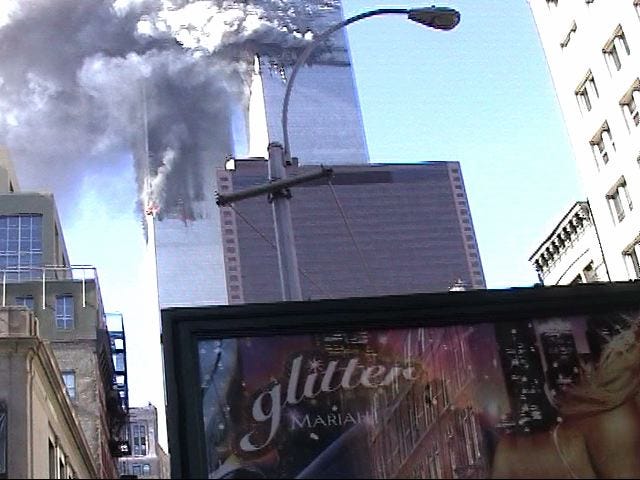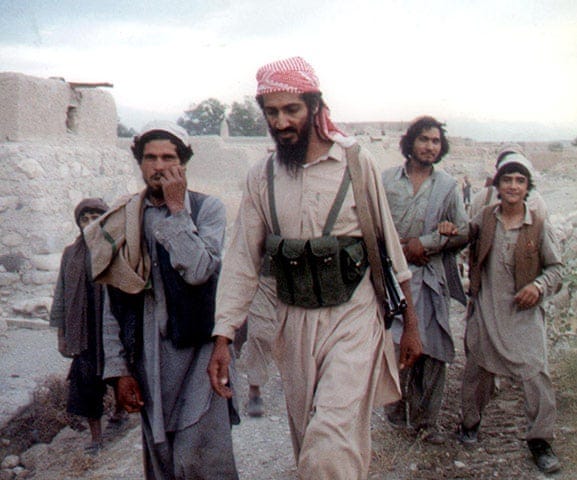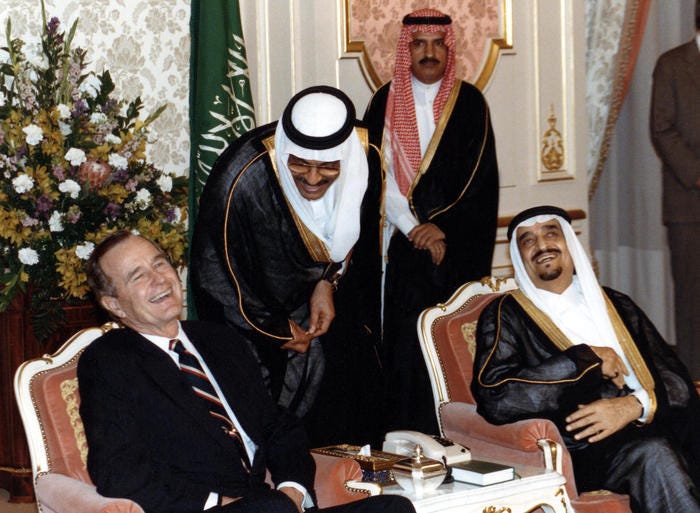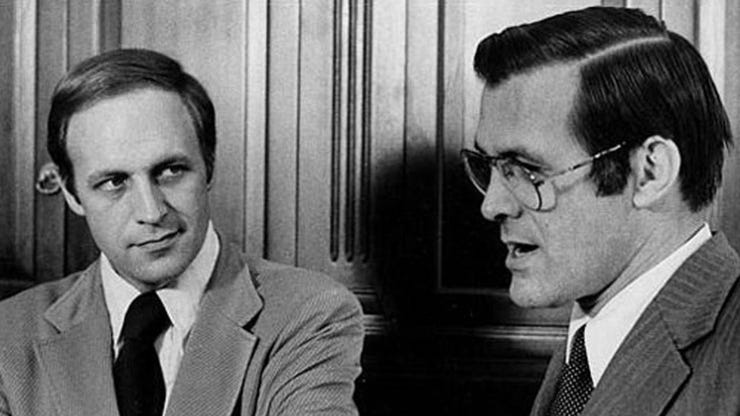Happy Patriot Day, fellow patriots.
So, something happened 2000 years ago, in the Levant. Texts and sects proliferated in its wake. A facile understanding of the Apostolic Age of Christianity pits orthodox believers against the “heretical” Gnostics. In the struggle towards ecumenism, a number of fundamental questions regarding Christian theology needed to be settled, and fierce debates arose over such issues as Christ's divinity, the obligations of the faithful, and ecclesiastical authority. In The Acts of John, one of the few Gnostic texts discovered prior to the great cache of scrolls at Nag Hammadi, Jesus isn’t exactly a man but a spiritual being, shaping its appearance to mirror those it encountered, the all-too-human Apostles. According to this view, Jesus appeared to die on the Cross, but, due to his essence’s divine nature, he transcended pain and death.
To the orthodox believers, this is apostasy. Jesus was a man; he suffered, died, and was buried; on the third day he rose from the dead, in fulfillment of the Scriptures; and that’s that. According to Elaine Pagels, this controversy strikes at the heart of an eminently practical concern for the early Church: how were Christians expected to respond to their own persecution, when their beliefs made them a target of state violence? Was martyrdom an emulation of Christ’s example, or a wrongheaded betrayal of the sacrifice he made for us? Is it pious to proclaim an elicit faith and invite persecution, even death, or is it smarter, more devotional, to keep such beliefs private, thereby escaping scorn?
I'm writing this from within a thick fog, literally: the beach town where I live has been enveloped in atmospheric condensation going on a week now. Some bright hours burn through to reveal a waning summer in all its splendor, but for the most part, a dreary marine layer limits my field of vision.
“Persecution has always succeeded save where the heretics were too strong a party to be effectually persecuted.” – John Stuart Mill
“It almost seems to be a requirement for admission into public discourse to announce that one rejects conspiracy theories. What is the logic behind this thinking? It cannot be that we literally reject the very idea that conspiracies occur.” – David Ray Griffin
In case it isn't clear, today we're talking 9/11.

Some quick Cold War background for the uninformed: American capitalists and military officials do not like communism. Or, during the 20th century, the US competed with the Soviets as oppositional superpowers for control of resources, if the “ideological” explanation seems lacking. Because of this, hardline Islamic Pakistan presented a potential ally for the West in maintaining some influence in Central Asia, home to, as is well known, vast mineral reserves, overland trade routes, and strategic military positions. A medieval memoir describes Kabul's attractiveness thusly: “In Kabul can be had the products of Khurasan, Rûm, Iraq and China; it is Hindustan's own market.” Afghanistan has been a desirable regional foothold for as long as there have been people to fight over it. So when a Marxist-Leninist regime took power in 1978, the Americans were none too pleased that the Soviets started sending aid and munitions to Afghanistan.
Though a more thorough accounting would no doubt provide insight into when exactly anti-communist operations in Afghanistan began in earnest, unfortunately Pakistan kept, let’s say, shoddy records of their support for the budding Islamist insurgency known as the mujahideen. The country's intelligence services, ISI, laundered its money through the bank BCCI, just like the Bushes and the Saudis did, to finance infrastructure projects courtesy of the bin Laden Corporation, and to train fighters under the watch of Sirajuddin Haqqani and Gulbuddin Hekmatyar, et al. Clearly, the details of the ISI/CIA-funded opposition to the Marxist-Leninist government of the Democratic Republic of Afghanistan, and the events leading up to the Soviet intervention are...complicated.
“According to the official version of history, CIA aid to the mujahideen began during 1980, that is, after the Soviet army invaded Afghanistan on December 24, 1979. But the reality, kept secret until now, is quite different: Indeed, it was on July 3, 1979, that President Carter signed the first directive for secret aid to the opponents of the pro-Soviet regime in Kabul.” – Zbigniew Brzezinski, National Security Advisor to President Carter, Jan 1998
“Now we can lure the Russians into the Afghan trap,” – Brzezinski in a secret note to President Carter, Feb 1979
Case in point: the murder of US ambassador to Afghanistan Adolph “Spike” Dubs in February of 1979, nearly a year before the official Soviet intervention began. Dubs was appointed ambassador to Kabul following the Saur Revolution, which brought to power Soviet-aligned factions in the country. Dubs had spent time at the American embassy in Moscow as ranking charge d’affaires, developing a healthy relationship with the communist superpower. He was an expert on Soviet policy who felt strongly that destabilization of Afghanistan would only be a disaster for all parties involved. So he hard worked to establish ties with the Marxist-Leninist Afghans and their Soviet allies. On February 14, 1979, Dubs was kidnapped while heading to the US Embassy in Kabul. Four men, waving pistols, dragged him from a diplomat’s black Chevrolet limousine and transported him to the Serena Kabul Hotel. This took place in sight of Afghan police, and some reports describe the assailants as wearing police uniforms. What the kidnappers demanded in return for the ambassador’s release is not clear; no accounts indicate they asked anything of the Americans. Against US protests, the Afghan police stormed the hotel, dressed in Soviet body armor and under KGB supervision. A shot was heard in the hotel, and moments later the strike team entered room 117, where Dubs was being held. After a brief firefight, three were dead, two assailants and Ambassador Dubs, who, according to an autopsy, had been shot in the head at close range. Who exactly these assailants were and what exactly happened in the Serena Kabul Hotel is still unclear. Regardless, the murder of an ambassador, usually beyond the pale in even the most tense of international relations, did not improve the US’s opinion of Afghanistan or the USSR. Ten months later the Soviets sent troops into Afghanistan and in the following decade of struggle against the US-backed mujahideen, the Soviet-Afghan War devastated the country.
“The horrifying legacy of superpower intervention could make an Afghan 'peace' as ghastly in its way as has been the terrible ordeal of war. This horrifying legacy consists of a disrupted political, economic, cultural, and social order, as well as the more literal residue of the war itself in the form of millions of unexploded land mines, vast arsenals of military equipment, and a variety of covert operations.” – Richard Falk, 1989
In the early 1990s, relations were ostensibly tense between the United States and Sudan, because the African nation was harboring a nascent mujahideen offshoot known as "The Base," or al-Qaeda. Sudan at this time, it is well known, also harbored Osama bin Laden, who had been expelled from Saudi Arabia for, according to US media sources, criticizing the monarchy's alliance with the Americans. After years of working in the KSA and Afghanistan for his family's business (and urging his good friend Gulbuddin Hekmatyar to cooperate with a coalition government post-withdrawal), bin Laden found himself setting up shop in Khartoum, where the CIA closely monitored his activities. Khartoum’s CIA Station Chief from 1993 to 1995 was Cofer Black, who later served as DCI George Tenet's Director of Counterintelligence at the CIA from 1999 to 2004. In 2005, Black would become Vice Chairman of Blackwater USA, top beneficiary of the State Department's counterterrorism contracts. All surely only coincidence.
“Yeah I'm talkin’ business, we talkin’ CIA/I'm talkin’ George Tenet, I seen him the other day” – Kanye West, “Clique”
Similarly, it's almost not worth mentioning that the asset management firm Carlyle Group owned controlling shares in defense contractors Booz Allen Hamilton and United Defense, both of which benefited greatly from the US's incursions into the Middle East during the Bush Administration; nor that the Bush family managed considerable funds through the Carlyle Group at the time; nor that the bin Ladens and other wealthy Saudis did so as well; nor that the Carlyle Group held a conference on Sept. 11, 2001, whereat Shafiq bin Laden, Osama's brother, was the guest of honor. Probably a waste of time rehashing all that. Just a group of successful businessmen and diplomats "managing the global economy to their own advantage, and doing a pretty good job of it," as Michael King of the Austin Chronicle said in defense of the Carlyle Group in 2002.
“The accusatory voices most often heard are strident and irresponsible, making them easily dismissed as ‘paranoid’ or ‘outrageous’ without further consideration of whether the concerns raised warrant investigation.” – Richard Falk, 2003
Unknown at the time of its destruction was that WTC7 housed both CIA and SEC offices, whose computers reportedly recorded financial transactions which, when the hard drives were recovered from the wreckage, suggested insider trading with regard to the high volume of activity involving airline and insurance companies in the days prior to the attack, conspicuously both United and American Airlines, the two airlines that experienced hijackings on 9/11. Most of those transactions were managed by Deutsche Bank's American investment firm Alex. Brown, which was formerly headed by A. B. “Buzzy” Krongard. Krongard was DCI Tenet's CIA Deputy Director, appointed March 2001, who had his own ties to Blackwater. (Tenet, in honor of the long incestuous relationship between the CIA and Wall Street, now works at Allen & Company, a boutique investment bank. He had joined the CIA in the hopes of “preventing another Pearl Harbor.” Shame he couldn't do that, given all this inside knowledge of the people that pulled off another Pearl Harbor.) Of course this wouldn't be only time options traders used information fed to them by feds hip to criminal activities to short soon-to-tank stocks. Nor is it last time Deutsche Bank comes up in relation to the attacks: in September 2005, a cache of bone fragments, reportedly from World Trade Center victims, was discovered atop the finance juggernaut's New York office building, just adjacent to the complex. The FBI, for what it's worth, denies that those SEC/CIA computers could have survived the collapse of WTC7, which was not struck by a plane, and by accounts that day did not even suffer substantial collateral damage (aside from the obvious)—definitely nothing that would support the claim that widespread, sustained fires threatened the stability of a skyscraper designed according to stringent architectural and engineering standards.
It's a wonder anyone feels safe in a skyscraper, given the official explanation for the collapse of WTC7 and the Twin Towers. Office buildings experience fires all the time; for reinforcing steel to warp so dramatically as to result in an entire floor collapsing onto the one below it would require extreme, sustained heat not likely produced by a hydrocarbon fire burning office supplies. Jet fuel doesn't need to melt steel beams, says the Debunker, but an office supply fire doesn't typically warp steel beams either—WTC7 is literally the first building in history to completely collapse due to internal fires (according to the Official Account). By the way, as a quick aside, those Debunkers that Popular Mechanics famously trotted out against the Architects and Engineers for 9/11 Truth? Popular Mechanics is owned by Hearst, so like, not to hand wave, but. The Twin Towers were designed with something like five times structural redundancy, so unless nearly every other engineers' understanding of the World Trade Center, including its designer's, is egregiously wrong (a terrifying possibility, to say the least), the "pancake" collapse explanation for why the Towers fell doesn't stand up to even common sense, since the Towers were built with a thick column of rebar and concrete in each building's core, in addition to perimeter supports. That discrepancy is obvious even without consideration of how quickly the Towers fell, four times faster than what such a fantastical explanation from the Debunker would realistically require. If each consecutive floor falls on the next, and the accumulated(???) force is what brought the Towers down in on themselves, how does that account for Tower 2 falling in 10 seconds, Tower 1 in 8—both near free-fall speed?
By the 1990s, the World Trade Center, the most glaringly obvious symbol of American capitalism maybe ever, was kind of a money pit. The complex required extensive renovations, notably for asbestos removal and a revamped central air system. The cost was exorbitant. But even with the knowledge that stewardship of the obsolescing buildings would be a huge pain in the ass, Larry Silverstein, already the leaseholder on WTC7, signed a 99-year lease on the Twin Tower complex. In July, 2001. Bum investment, right? But thanks to a $3.5 billion insurance policy claimed against twice, each plane counting as a "distinct" attack, so the argument went, Silverstein walked away with a $4.5 billion settlement. Good thing an unexpected appointment across town scheduled by his wife (thanks, dear!) on the morning of 9/11 made him miss his never-before-missed daily meeting in Windows of the World, the restaurant suite on the top floor of WTC1, otherwise he'd be out all that moolah and as dead as the breakfast companions he stood up.
Speaking of not showing up to work, do you know just how fucked the aerospace chain of command was on 9/11? Completely fucked. The General of the Joint Chiefs of Staff Henry Shelton was out; Lt. General Mike Canavan, the coordinator for hijackings, was in Puerto Rico without having designated a surrogate; Ben Sliney, FAA National Operations Manager, had the the worst first day of work ever; as did Captain Charles Leidig, who, freshly certified for the position, stepped in as head of the National Military Command Center (NMCC) at the previous day's behest of General Montague Winfield. Sliney needed to notify the hijacking coordinator to notify NMCC of their need for a military escort, which NMCC needs to request from the Department of Defense directly, who would then send the order over to NORAD, which just so happened to be conducting a major war game exercise that day. But when the brand-new FAA operations manager calls the hijacking coordinator's office and no one is there, the hijacking coordinator can't contact the NMCC commander to request DoD approval for a military escort. Not that it matters because for 30 crucial minutes NO ONE KNEW WHERE THE FUCK DONALD RUMSFELD WAS. THE SECRETARY OF DEFENSE. DONALD RUMSFELD.
DONALD RUMSFELD AND DICK CHENEY HAD BEEN PARTICIPATING IN CONTINUITY OF GOVERNMENT EXERCISES SINCE THE REAGAN ADMINISTRATION, CONTINUING INTO THE 90s WHEN NEITHER MAN HELD GOVERNMENT OFFICE, BUT BOTH SAT ON THE BOARDS OF MAJOR CORPORATIONS. THESE EXERCISES WERE INTENDED, UNDER EISENHOWER, TO PREPARE FOR THE POSSIBILITY THAT, IN THE EVENT OF A NUCLEAR ATTACK, TOP GOVERNMENT LEADERSHIP IS INCAPACITATED. UNDER REAGAN, THE RATIONALE FOR THE INITIATION OF SUCH A PROCEDURE EXPANDED TO INCLUDE “ANY OCCURRENCE, INCLUDING NATURAL DISASTER, MILITARY ATTACK, TECHNOLOGICAL EMERGENCY, OR OTHER EMERGENCY, THAT SERIOUSLY DEGRADES OR SERIOUSLY THREATENS THE NATIONAL SECURITY OF THE UNITED STATES.” ON SEPTEMBER 10, 2001, DONALD RUMSFELD PREPARED THE CONTINUITY OF OPERATIONS PROGRAM FOR AN EXERCISE, WHICH MADE THE PROTOCOL’S FIRST EVER OFFICIAL ENACTMENT ON 9/11 AS SILKY SMOOTH AS THE SECRETARY’S DEMEANOR THAT MORNING. IN THE YEAR THAT FOLLOWED, DICK CHENEY AND THE NEOCONS FROM PNAC GATHERED WITH BUSINESS LEADERS AND BUREAUCRATS TO OUTLINE PLANS FOR THE OPERATION OF POWER IN A CATASTROPHE, HOLING UP AT SECRET BUNKERS, REMAINING INCOMMUNICADO FOR MONTHS AT A TIME. THE "NEW AMERICAN CENTURY" WAS MIDWIFED AT THESE AND OTHER MEETINGS AS BINDERS FULL OF MEMORANDA, DIRECTIVES, AND GUIDELINES—LEGALISTIC JUSTIFICATIONS FOR THE FASCIST OVERREACH OF THE CORPORATE-INTELLIGENCE COMPLEX, A DECADE’S LONG PROJECT LEGITIMIZED BY THE PATRIOT ACT, ITSELF A MOCKERY OF THE DEMOCRATIC PROCESS, WITH LAWMAKERS ADMITTING THEY NEVER READ THE TEXT OF A BILL GIVING THESE PSYCHOPATHS UNLIMITED DOMESTIC SURVEILLANCE POWER AND THE RIGHT TO EXTRADITE AND TORTURE ON THE FLIMSIEST OF SUSPICIONS.
That’s just the start, but I can't get into all of it here; I skipped over the Pentagon entirely, and the hijackers that could barely fly, preposterous flight patterns, also Israel, Mossad, PROMIS software, Robert Maxwell, Adnan Khashoggi, the Safari Club, Shanksville, anthrax, Fort Detrick, Norman Mineta, Richard Clark, Richard Myers, Philip Zelikow, San Diego, Henry Kissinger, AIG, le Cercle, Mohammed Atta, KSM, opium poppies, natural gas, Iran, Iraq....what megalomaniac could possibly keep track of it all, let alone suggest a coherent narrative?
“The aim, therefore, of patriots was to set limits to the power which the ruler should be suffered to exercise over the community.” – John Stuart Mill
JEFF FOXWORTHY'S VOX-WORTHY EXPLAINER: CONSPIRACY EDITION
If there's an excess of seemingly non-sequitur quotes and/or references to Gnosticism...that might be a conspiracy theory! (LAUGHTER)
If rhetorically persuasive information is presented without citation...that might be a conspiracy theory! (LAUGHTER)
If the time comes for the argument to reach a logically sound conclusion, and instead an ambiguous joke is made...that might be a conspiracy theory! (LAUGHTER, STANDING OVATION, ROSES)
All joking aside, one red flag someone's argument is more bad faith conspiracizing than good is that the evidence is presented or excluded on the basis of its support for a predetermined conclusion. For example, that al-Qaeda was solely to blame for the attacks on the World Trade Center and the Pentagon, which was the assumption of the 9/11 Commission, wherein any evidence to the contrary is dismissed out of hand without adequate justification, often to unintentionally comical effect.
David Ray Griffin lists eight possible accounts for the myriad discrepancies and outright absurdities in the explanation offered by the US government of what happened 20 years ago. At the lowest level of culpability, the US government was unaware of the plots but participated in a cover-up of whatever did happen. At the highest level, the White House facilitated and/or directed the destruction of the World Trade Center and the western halls of the Pentagon, and with them, the murder of 2,996 people. All eight possibilities are disturbing; one need not suggest presidential guilt to say that the government's disregard for the truth, not to mention human life, is enough cause to shake one's faith in democratic rule.
But for the record, I think They did a lot more than merely cover something up.
Postscript
David Ray Griffin's book The New Pearl Harbor: Disturbing Questions about the Bush Administration and 9/11, which informed much of the foregoing, was one of the titles discovered on the bookshelf of Osama bin Laden. When bin Laden referred to the events of that day, he called it only “Manhattan.”
Post-Postscript
“The Americans will stay here as long as they like. An unstable Afghanistan will always serve as a perfect pretext.” - Fatima Gayazova, editor-in-chief of a Kyrgyz TV station, as interviewed by Lutz Kleveman, 2003
As you are likely already aware, following the withdrawal of US forces last month, the Taliban swiftly retook control of Kabul. Among those named by the Taliban to helm the new Afghan government is Sirajuddin Haqqani, Osama's old jihad buddy. Reportedly they’ll be fighting against the Khorasan branch of al-Qaeda’s bastard child, ISIS. On August 23, CIA Director William Burns met with Taliban leadership regarding the transition of power.
Post-Post-Postscript
I promise I won't talk about the CIA next time.






